Puppies are adorable. The teething process begins causing problems for dogs when their teeth start appearing. Signs of teething pain include damaged shoes through teeth chewing and painful gums combined with struggling moods. As a fresh dog owner you have no need to stress about these issues. Teething is natural. Having a teething puppy is difficult for you as well as your little dog. The relief of teething discomfort becomes easier because of numerous available strategies.
When Does Teething Start?

Puppy teething pain, The teething process starts to appear during three weeks after birth. The process of puppy tooth emergence occurs at this time. At six weeks of age most puppies display their full set of baby teeth. The serious discomfort for puppies starts emerging during their three to four month period. During this time period baby teeth automatically fall from the mouth. The adult teeth pass through the gum tissue. This process causes discomfort. The teething process persists from six to eight months of age for most puppies.
Common Signs of Teething

You’ll notice some changes. Puppies chew more. They drool a lot. Some may have swollen gums. Others might be irritable. Puppies can show decreased food appetite at this time. Small teeth can be discovered within your house. Don’t panic. These are all normal signs.
Why Do Puppies Chew So Much?

Chewing helps relieve pressure. It soothes sore gums. Puppies lack the ability to communicate their discomfort through words. The habit of chewing takes over their behavior because they lack any discerning method to decide what to chew. Shoes along with furniture and hands remain their targets when it comes to chewing activities. The responsibility for you is to present alternative items that are safe for them to use.
Tip 1: Use Puppy Teething Toys

Teething toys are a must. Choose toys made for puppies. They are soft but strong. Silicone and rubber toys serve as appropriate alternatives for chewing. Some toys can be frozen. Cold helps numb the gums. This brings quick relief.
Tip 2: Offer Frozen Treats

The alternative option for relief includes frozen carrots or pieces of banana. Broth can be easily frozen using an ice cube tray. Frozen snacks have a natural pain-relieving effect for tender gums. But always supervise your puppy. Always check that the treats are suitable for consumption.
Tip 3: Try Wet Washcloths

Soak a clean cloth in water. Twist it and freeze it. Make sure your puppy receives the frozen object to bite. The cold cloth eases pain. It also cleans the gums. This is a cheap and easy fix.
Tip 4: Keep Chew Items Handy
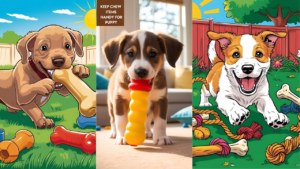
Puppies develop a complete habit of chewing because they are experiencing teething. Always have a toy nearby. Steer the puppy toward appropriate objects instead of letting them chew harmful materials. Say “no” gently. Then offer the toy. Provide positive feedback to your puppy whenever they handle appropriate chewable items. This helps them learn fast.
Tip 5: Avoid Hard Items
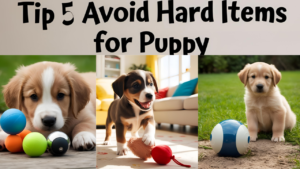
Don’t give bones or antlers. Puppies cannot handle this sort of chewing items. The objects can damage both teeth and cause gum injuries. Only provide chewable items that are soft and flexible. Safety is key during teething.
Tip 6: Massage the Gums
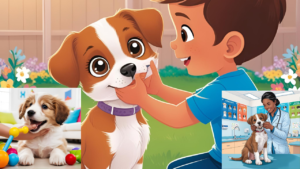
Light hand movements on the gums serve as possible massage techniques. The application of either your finger or a soft cloth will work for this step. Do this for a few seconds. It helps ease pressure. This particular form of attention provides comfort to some puppies.
Tip 7: Maintain a Routine

A routine provides comfort to puppies because it makes them feel secure. The combination of regular meals and play activities with nap times aids a puppy in maintaining increased calmness. A peaceful puppy demonstrates better capability for tolerating pain. Plus, routines make training easier.
Tip 8: Use Natural Remedies
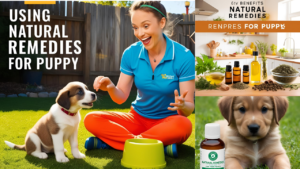
Some owners use herbal products. Drinking chamomile tea which has been cooled down functions as a suitable option. A small amount of drops applied to the gums can provide benefits. Before using any remedies you should always seek veterinary approval. Natural doesn’t always mean safe.
Tip 9: Clean the Teeth
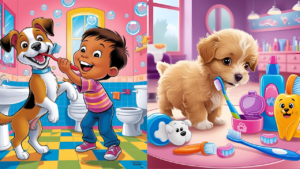
The development of teeth marks the proper period to begin tooth brushing. Use a soft puppy toothbrush. Choose dog-safe toothpaste. Brushing removes food and bacteria. Physical dental rituals at this phase help your puppy embrace dental care practices for the future.
Tip 10: Visit the Vet

Televisiting a medical professional for veterinary assessment becomes necessary when your pup experiences excessive pain. Certain puppies experience the condition of maintaining their baby teeth. These may need removal. Visits to a vet will enable checks of the mouth and provide helpful guidance.
Transitioning Past Teething
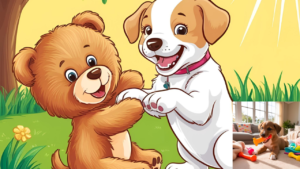
Eventually, teething will end. The pain will fade. Your puppy will develop every tooth that becomes permanent. But until then, your support matters. Using appropriate tools will help smooth the teething experience.
Prevent Chewing Problems Later
The present actions create the direction toward the future. Proper chewing behavior in puppies leads to mature dogs with positive behavioral characteristics. So, be patient. Offer support. Set rules. Most importantly, show love.
Teething is a tough phase. But it doesn’t last forever. Through your provision of toys together with treats and care your puppy recovers emotionally. In return, you build trust. Such beginning marks the foundation for building a strong bond.
Continue showing calmness while keeping consistency through the use of lots of love. The puppy’s gratitude will be visible through joyful tail wags and affectionate licks together with improved shoe preservation.
When does puppy teething start and end?
Puppy teething typically starts around 3 weeks of age and continues until about 6 months old.
What are the signs my puppy is teething?
Chewing, drooling, irritability, decreased appetite, and swollen gums are common signs.
Is teething painful for puppies?
Yes, teething can be uncomfortable and sometimes painful, similar to human babies.
What can I give my puppy to relieve teething pain?
Try frozen carrots, rubber chew toys, or puppy-safe teething rings.
Are there any natural remedies for teething discomfort?
Chilled wet washcloths or frozen fruits (like blueberries) can help soothe sore gums.
Can I give my puppy human pain relievers?
No, never give human medications to dogs without veterinary advice. Always consult your vet.
How can I stop my puppy from chewing on furniture?
Offer appropriate chew toys, use bitter sprays on furniture, and supervise closely during teething.
When should I be concerned about my puppy’s teething?
If you notice bleeding gums, loss of appetite, or retained baby teeth after 6 months, consult your vet.
